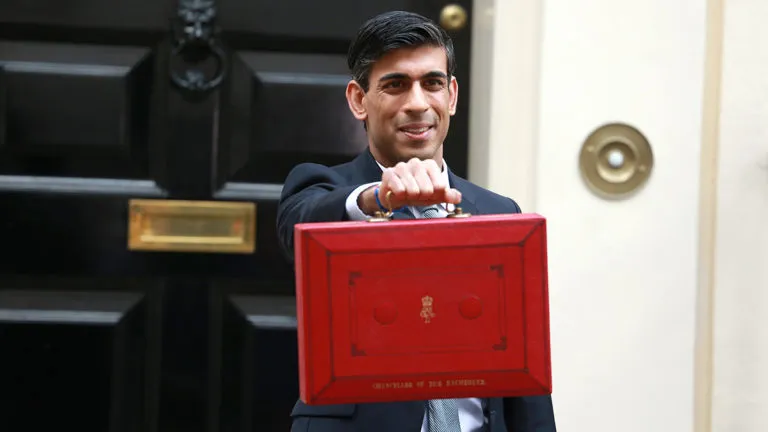Budget 2020: What are the Chancellor’s plans to end homelessness?
Published: by Robin White

A week might be a long time in politics, but 18 months is a lot longer. And that’s how long we’ve had to wait for a budget – our last having been delivered two chancellors ago back in November 2018. What has stayed stubbornly and heartbreakingly true throughout this period in England is that we have been continually stuck in a national housing emergency.
This emergency is now impacting the lives of millions of people living in every region of the country. This includes the 280,000 people who woke up this morning without a home, 126,000 of whom are children. It includes the 4,266 people sleeping on our streets. And it includes the hundreds of thousands of families being let down by inadequate housing benefit levels, with rates failing to cover rents in 97% of areas.
While facing a health crisis, our country needs a budget to tackle the housing emergency. One to kick-start the social home building revolution we need, one that tackles the failure of housing benefit rates to cover rents, and makes good on government commitments to end rough sleeping. So, what did we get?
The top line answer is that there has been some progress, but we still have a long way to go.
Building the social homes we need
At the heart of any solution to the housing emergency there has to be a major programme of investment in social housing. Unlike other affordable rented and affordable homeownership products, social housing is affordable to everyone, everywhere.
There was some good news here. In the budget we saw two key announcements that relate to social housing:
- A new generation of the Affordable Homes Programme (AHP)
The Chancellor has confirmed that once the existing AHP comes to a close next year a new multi-year settlement will be made available. This next iteration will increase the overall funding pot, moving from £9 billion in the current programme to £12.2 billion in the next.
This is welcome as the AHP is vital to enabling the delivery of affordable and social housing in England. However, it remains unclear how much of this new settlement will be made available specifically for the delivery of social rent homes, which are ultimately the types of homes that we most need and for which unmet demand is greatest. The Housing Secretary did later say in Parliament that while the proportion was to be decided he did ‘want to see a significant increase in the number of homes in the social rent category’ and that he was listening for advice. We will keep campaigning to get these built and you can add your voice below.
- Helping councils borrow to build
Councils rely on borrowing from the Public Works Load Board (PWLB) in order to build homes themselves. However, in 2019, councils were hit with an unexpected 1% increase on borrowing something that threw many development plans into disarray as the finances no longer stacked up.
The decision to reverse this rate increase is very welcome. In addition, the decision to reverse it specifically to enable councils to borrow to build social housing is another major signal from government that they support councils to be delivering this most vital tenure.
We look forward for when Robert Jenrick can provide that clarity around how much of the next AHP will be earmarked for social housing.
Ensuring a robust safety net
Building the homes we need to end the housing emergency cannot happen overnight. In the meantime, we need to ensure that support exists to help people find and stay in a home they can afford, unless we do this the reality is that homelessness will only continue, and we will remain reliant on options like wildly expensive temporary accommodation.
LHA rates are designed to cover at least the bottom 30% (or 30th percentile) of every local rental market. The impact of the cuts and four-year freeze mean they now in 97% of areas in England. In a third of areas in England (32%), they do not even cover the bottom 10% of the rental market for a modest family home.
This budget was an opportunity to tackle this issue – an opportunity that the government missed. Without this, families will continue to be pushed into and closer to homelessness.
Ending rough sleeping
In its 2019 election manifesto, the government committed to ending rough sleeping by the end of this parliament.
The Government has allocated £650 million in recent weeks to help making this a reality. In particular, it is positive to see the government accepting a responsibility to provide not only services to rough sleepers but also homes by making 6,000 units available.
We should not underestimate the scale of this challenge though. Although rough sleeping fell 9% in the last year it is up 141% across the course of a decade. On top of this rough sleeping is only the tip of the iceberg when it comes to homelessness. Overall 280,000 people in England are currently homeless, and this does not include the hidden homeless who are not captured in official statistics.
What next?
Chancellor Rishi Sunak’s first budget was a clear step forward in trying to address the housing emergency – but far more is needed before we can consider the job to be done.
Ultimately, no solution exists that does not involve social housing. This week was a positive one in that regard but the fact remains that there are still 17,000 fewer social homes today than there were this time last year.
The Secretary of State needs to make sure the money promised goes to the right place and earmark a significant amount of the AHP for social housing.
He must take it.
Help us make sure that the government commits to building the social housing we so desperately need by adding your name to our petition.